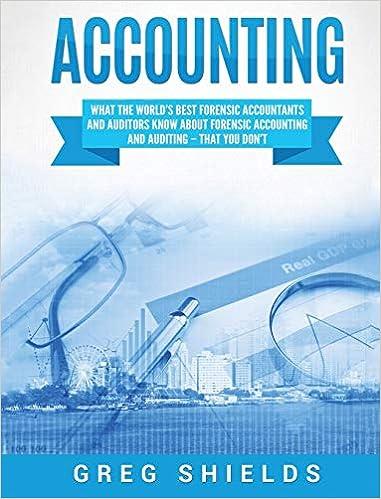Answered step by step
Verified Expert Solution
Question
1 Approved Answer
the 5 firms i choose are at the bottom . what does that mean 1. Please use your six companies in the previous Financial Ratios
the 5 firms i choose are at the bottom 


"." what does that mean
1. Please use your six companies in the previous "Financial Ratios" to list the stock prices of June 1 and July 1, 2020. Use above info to compute stock return for individual stock (1%, listing the computation). 2. Collect Beta coefficient for each stock and explain the risk (high, low or close to the average) (2%) 3. Conclude your portfolio investments in these six stocks and the risk and returns. (1%) .88 .88 .80 Answer: I am taking 5 companies' Ratios as on December 31, 2019: Ratios as on Dec. 31, 2019 General Ratio name Amazon Walmart IBM AT&T Explanation Motors Amazon's and IBM's current ratio is Current 1.097 better because it is above 1. It means .794 1.02 .79 ratio Amazon and IBM are more liquid than other 3 companies. Amazon, Walmart and AT&T's debt/equity ratio is lower than 1 hence Debt equity .3773 2.99 2.24 these are in better position. Higher ratio debt/equity ratio is not good for companies. Amazon's and Walmart's Asset turnover Asset is better than other three companies, turnover 1.245 2.215 .5069 .602 .328 higher the ratio is good that means ratio company is able to utilize its assets to generate sales. Profit IBM's profit margin is the highest 4.13 2.84 12.22 4.79 margin 7.67 among all, it has better profitability than other 4 companies Price to Amazon's P/E ratio is the highest, higher P/E is not good if it cannot provide earning 86.29 22.06 12.68 7.99 20.57 higher earnings. Lower P/E ratio means ratio that the share is cheaper. Amazon's price to book value ratio is the Market to 16.28 3.98 5.67 1.11 book ratio 1.40 highest because its market capitalization and current price are the highest. Closing stock price $2471.04 $123.96 $124.89 $26.94 $30.93 as on June 1 1. Please use your six companies in the previous "Financial Ratios" to list the stock prices of June 1 and July 1, 2020. Use above info to compute stock return for individual stock (1%, listing the computation). 2. Collect Beta coefficient for each stock and explain the risk (high, low or close to the average) (2%) 3. Conclude your portfolio investments in these six stocks and the risk and returns. (1%) .88 .88 .80 Answer: I am taking 5 companies' Ratios as on December 31, 2019: Ratios as on Dec. 31, 2019 General Ratio name Amazon Walmart IBM AT&T Explanation Motors Amazon's and IBM's current ratio is Current 1.097 better because it is above 1. It means .794 1.02 .79 ratio Amazon and IBM are more liquid than other 3 companies. Amazon, Walmart and AT&T's debt/equity ratio is lower than 1 hence Debt equity .3773 2.99 2.24 these are in better position. Higher ratio debt/equity ratio is not good for companies. Amazon's and Walmart's Asset turnover Asset is better than other three companies, turnover 1.245 2.215 .5069 .602 .328 higher the ratio is good that means ratio company is able to utilize its assets to generate sales. Profit IBM's profit margin is the highest 4.13 2.84 12.22 4.79 margin 7.67 among all, it has better profitability than other 4 companies Price to Amazon's P/E ratio is the highest, higher P/E is not good if it cannot provide earning 86.29 22.06 12.68 7.99 20.57 higher earnings. Lower P/E ratio means ratio that the share is cheaper. Amazon's price to book value ratio is the Market to 16.28 3.98 5.67 1.11 book ratio 1.40 highest because its market capitalization and current price are the highest. Closing stock price $2471.04 $123.96 $124.89 $26.94 $30.93 as on June 1 Step by Step Solution
There are 3 Steps involved in it
Step: 1

Get Instant Access to Expert-Tailored Solutions
See step-by-step solutions with expert insights and AI powered tools for academic success
Step: 2

Step: 3

Ace Your Homework with AI
Get the answers you need in no time with our AI-driven, step-by-step assistance
Get Started


